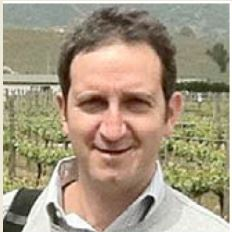Membranes for Environmental Applications
A special issue of Membranes (ISSN 2077-0375). This special issue belongs to the section "Membrane Applications".
Deadline for manuscript submissions: closed (31 October 2015) | Viewed by 70895
Special Issue Editors
Interests: polymeric membranes; sustainable membrane preparation; bio-polymeric membranes; flat membranes; hollow-fibers; nano fibers; membrane preparation; membrane characterization; pervaporation; antifouling coatings; self-cleaning membranes; ultra-micro filtration
Special Issues, Collections and Topics in MDPI journals
Interests: membrane design; membrane fabrication; membrane-based separation processes; high-throughput techniques; industry oriented applications
Special Issues, Collections and Topics in MDPI journals
Special Issue Information
Dear Colleagues,
Membranes are gaining more and more interest in many different fields because of the low-energy consumption, the mild operating conditions, the possibility to be integrated with other membranes and conventional processes, and the easy scale-up. Thanks to these peculiarities, membranes have been already successfully used in environmental applications. In addition to well-established membrane operations, new ones have been developed, allowing the possibility of enlarging the applicative spectrum of membrane units.
This Special Issue will highlight the importance of the membranes in Environmental Applications. It welcomes both original contributions and reviews related to applications using membranes, mainly for wastewater treatment, desalination, drinking water production, water reuse, removal of toxic metals from water, Volatile Organic Compounds removal from aqueous or gas streams, CO2 removal, and production and recovery of high-added value products from wastewater.
Dr. Alberto Figoli
Dr. Alexey Volkov
Guest Editors
Manuscript Submission Information
Manuscripts should be submitted online at www.mdpi.com by registering and logging in to this website. Once you are registered, click here to go to the submission form. Manuscripts can be submitted until the deadline. All submissions that pass pre-check are peer-reviewed. Accepted papers will be published continuously in the journal (as soon as accepted) and will be listed together on the special issue website. Research articles, review articles as well as short communications are invited. For planned papers, a title and short abstract (about 100 words) can be sent to the Editorial Office for announcement on this website.
Submitted manuscripts should not have been published previously, nor be under consideration for publication elsewhere (except conference proceedings papers). All manuscripts are thoroughly refereed through a single-blind peer-review process. A guide for authors and other relevant information for submission of manuscripts is available on the Instructions for Authors page. Membranes is an international peer-reviewed open access monthly journal published by MDPI.
Please visit the Instructions for Authors page before submitting a manuscript. The Article Processing Charge (APC) for publication in this open access journal is 2700 CHF (Swiss Francs). Submitted papers should be well formatted and use good English. Authors may use MDPI's English editing service prior to publication or during author revisions.
Keywords
- membranes
- environmental applications
- water treatment
- wastewater treatment
- toxic compounds removal
- desalination
- CO2 removal
- Volatile Organic Compounds







